Irish Sea
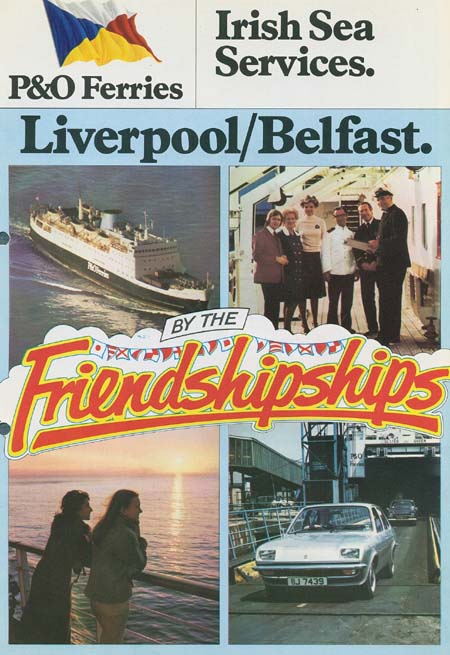 "Ulster Queen" (P&O)
"Ulster Queen" (P&O)
Irish Mail
After two o'clock in the morning, the "Irish Mail", the train which during more than a century has conveyed the last letters and newspapers from London, arrived at Holyhead. Passengers changed to the "St. Columba", a Sealink ferry of 7,836 gt. Then she is departing past the sleepy houses alongside the Irish Sea. The sea is calm and passengers have no idea how difficult the manoeuvre in the port may be in stormy weather. They have taken a chair in the saloon and no few ones prefer to sleep on the floor. After a short night, the ferry approaches Ireland and we have been fortunate enough to experience a nice morning when the sun has just risen and its rays are catching the green hills and gardens, which make the Irish coast looking lovely like the Riviera of Italy. The ship arrives at Dun Laoghaire, known as Dunleary, formerly Kingstown, where in that spring 1981 buses for Dublin are waiting. In the past, the passenger could go by train to Dublin, then to Cork in the utmost south and to Cobh, the former Queenstown, where the steamers from England charged the last mails by tenders before leaving for America.
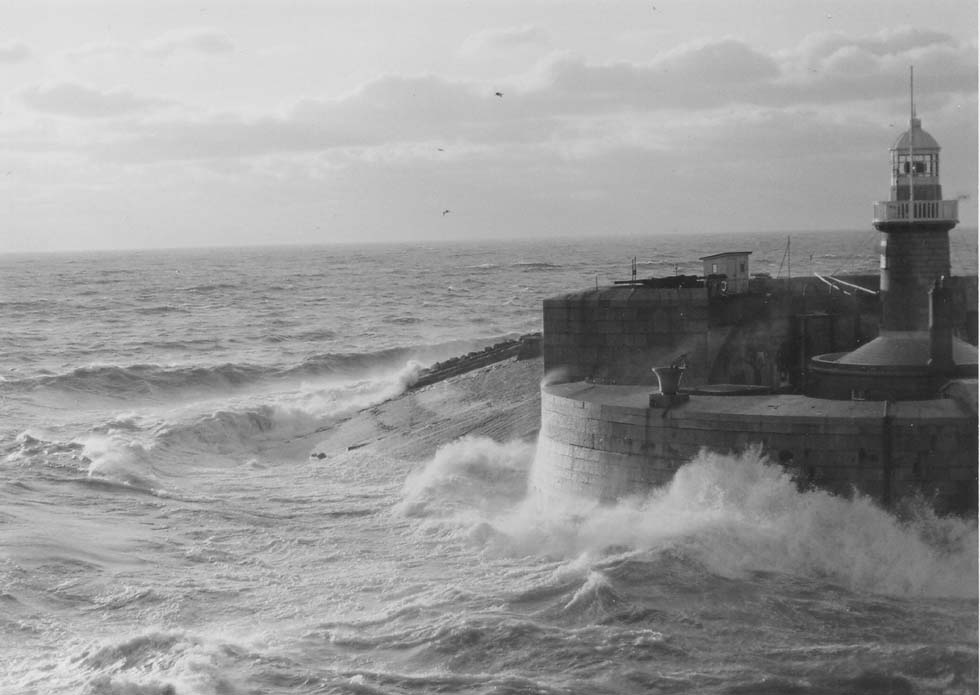
Irish Coast near Dun Laoghaire (WS)
Irish Sea Mail Steamers
About one and a half century ago, Jules Verne traveled to America aboard the gigantic "Great Eastern" and when she passed Queenstown he noted: "Every ship which comes from America or the south discharges mail bags when passing there. An express train, always ready for departure, conveys them within a few hours to Dublin, where a mail steamship, constantly under pressure, a thoroughbred steamer which seems to consist exclusively of engines, takes over the mails. At a speed of 18 miles per hour she crosses the Irish Sea and delivers the mail at Liverpool. The dispatches conveyed by that way gain a full day compared to the ocean liner's route".
Already in 1818 the 90-ton steamer "Rob Roy" was built for the Irish Sea, then however transferred to Channel services. The first steamers for a Holyhead - Dublin mail service of the Post Office had been built in 1821. The City of Dublin Steam Packet Co. was founded in 1824 and their "William Faucett", a steamer of 206 tons, connected from 1829 Dublin with Belfast, Plymouth and London (according to Vauquesal-Papin). The sea-route was shortened after completion of the Dublin & Kingstown Railway in 1834. Liverpool got a rail link with London in 1838 and that must have been the reason for rerouting the mail to Liverpool - Kingstown. The start of a special mail train Dublin - Cork, connecting with the steamer from Liverpool, has been reported from 1849. Holyhead was reached by rail in 1848, but only with completion of the Britannia Bridge in 1850 the train which later became known as the Irish Mail could provide the fastest communication to Ireland in connection with the steamer to Kingstown (Dun Laoghaire) and a "boat train" to Dublin. The railway to Holyhead was the Chester & Holyhead Railway, in 1858 amalgamated with the London & North Western Railway. In the early 20th century, White Star liners such as the "Baltic" and "Cedric" called at Holyhead, where passengers of the American Boat Special to and from London were transferred by tender.
The Cunard liners, dispatched at Liverpool for North America, called at Queenstown (Cobh) in the south from 1859 and postal historian Howard Robinson confirmed that British mails, which departed 24 hours later than those charged at Liverpool, could take the steamer at Queenstown by coming down from Holyhead and being conveyed by rail to Cork.
The paddle steamer "Connaught" resembled the ship "which seems to consist exclusively of engines", as being described by Jules Verne. The National Maritime Museum informed: To the best of our knowledge this vessel served the Holyhead to Kingstown route for the City of Dublin Steam Packet Company".
Much more famous had become the "Sirius", which was the first steamship to arrive in New York from Britain - see chapter North Atlantic. This vessel of c. 700 tons, chartered out in 1838 for that purpose, belonged to the St. George Steam Packet Co. and was employed in the Irish Sea and on the run between Cork and London.
Later, during decades, the Mail steamers crossing the Irish Sea belonged to the London & North Western Railway, which founded its L&NWSC in 1891. Competitor was the City of Dublin Steam Packet Co. The latter was taken over in 1918 by the London & North Western, which in 1923 amalgamated with the Midland Railway to become the London, Midland & Scottish Railway LMS. Among the other lines of the Irish Sea, the Isle of Man Packet Co., founded in 1830, became the most long-lived one.
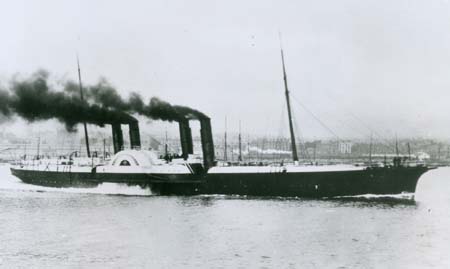
"Connaught"of City of Dublin Steam Packet Co. in 1860 (National Maritime Museum)
|
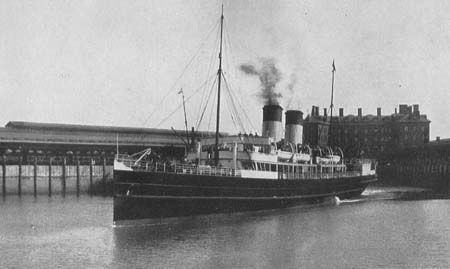
Steamer of London & North-Western leaving Holyhead (Rly. Gazette 1910, Deutsches Museum, Munich)
|
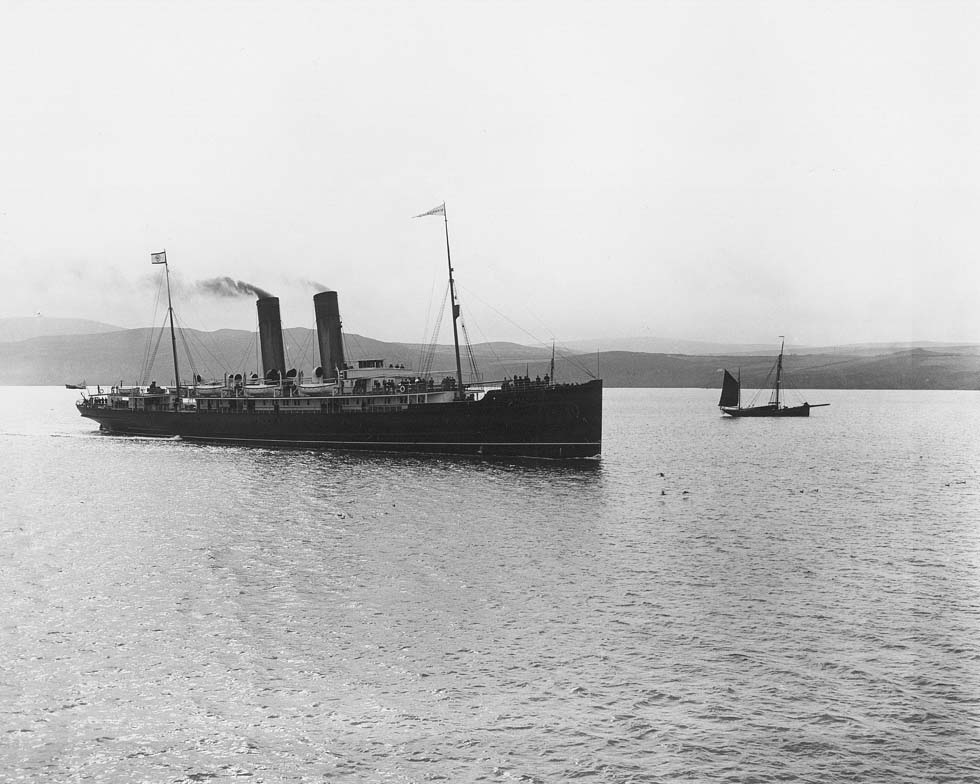
"St. Patrick" (date and source unknown)
WWI and Aftermath
Two disasters during WWI hostilities were reported by historian Michael H.C. Baker: "On the night of November 3, 1916, the LNWR steamer 'Connemara' had just set out from Greenore bound for Holyhead and was heading into a south-westerly gale when she was struck amidships by the collier 'Retriever' ... All but one of the Retriever's crew perished, and every soul on board the Connemara, 51 passengers, four railwaymen and 31 crew, were drowned. ... The worst disaster ever to befall an Irish cross-channel ship overtook the city of Dublin mail steamer 'Leinster' on Friday, October 11, 1918. She was one of the boats regularly employed on the Holyhead - Kingstown run... A short distance out she passed her sister ship, the 'Ulster' inward bound from Holyhead, and less than 15 minutes later the 'Leinster' was struck amidships by a torpedo...". More than 500 people died.
After desperate struggles, Ireland got the status of a Dominion in 1922. Poverty forced a large part of the population to migrate and the ride to Queenstown meant for them the last farewell. In 1949 Ireland became independent and still in the '60s the United States Line, the Holland America Line and some smaller Cunard liners had a stop outside Cobh, the former Queenstown. Dutch steamers had called also at Galway on the west coast, where already in 1851 the Irish trans-Atlantic mail harbour had been planned - in vain. Steamer services from Fishguard in the south-west of England to Rosslare, Ireland, had been introduced in 1906 and from 1909 Cunard liners charged and discharged London mails when passing Fishguard, but obviously only until WWI. The Fishguard Boat Trains did run even after World War II.
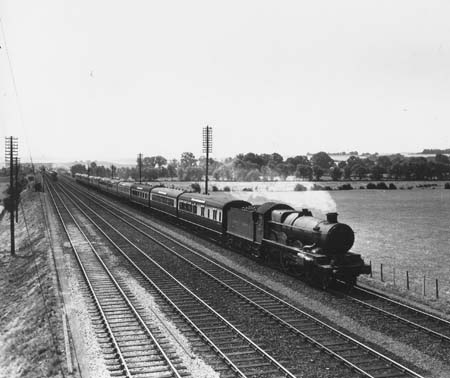 Down Fishguard Boat Train with Castle class locomotive in 1949 (British Railways)
Down Fishguard Boat Train with Castle class locomotive in 1949 (British Railways)
For some time trans-oceanic steamers of the Allan Line had a stop at Londonderry in Northern Ireland. That British part of the isle saw in 1929 world's first diesel-powered ferry, the "Ulster Monarch" of the Belfast SS Co. on the Liverpool - Belfast service. Until 1957 ten similar ships followed, used also on the Glasgow - Belfast, Liverpool - Dublin and Fishguard - Cork routes.
Start of Car Ferries after WWII
After WWII, in 1948, the LMS and their shipping services were incorporated into the British Railways (BR). In the '50s the routes Holyhead - Dun Laoghaire, Fishguard - Rosslare and Stranraer - Belfast across the North Channel were operated by BR, Liverpool - Dublin by the traditional British & Irish Steam Packet Co., Fishguard - Cork by the City of Cork Steam Packet Co. and Liverpool - Belfast by the Belfast SS Co. The famous P&O, still under leadership of Lord Inchcape, entered the new business of car ferries with the blue/white "Ulster Queen" and "Ulster Princess" on the Liverpool - Belfast run, and then on Larne and Dublin routes. B & I Line operated Liverpool - Dublin and Swansea - Cork and Townsend Thoresen linked Cairnryan with Larne, north of Belfast. Irish Ferries established the Irish Continental Line, connecting Rosslare with Cherbourg, using the "St. Kilian" (ex "Stena Scandinavica"), purchased in 1978. Townsend Thoresen was swallowed by P&O in 1987. A shock for England came in 2006, when BBC informed that container shipping of the Peninsular & Oriental was to be acquired at a price of 3 billion pounds by the Dubai Port Company of the Emirates, P&O Ferries being in its portfolio. In 1973 British and French railway shipping services had been labeled Sealink. The British part, Sealink UK, was acquired in 1984 by the Sea Containers Group of James Sherwood, in 1990/91 sold to Stena Line.
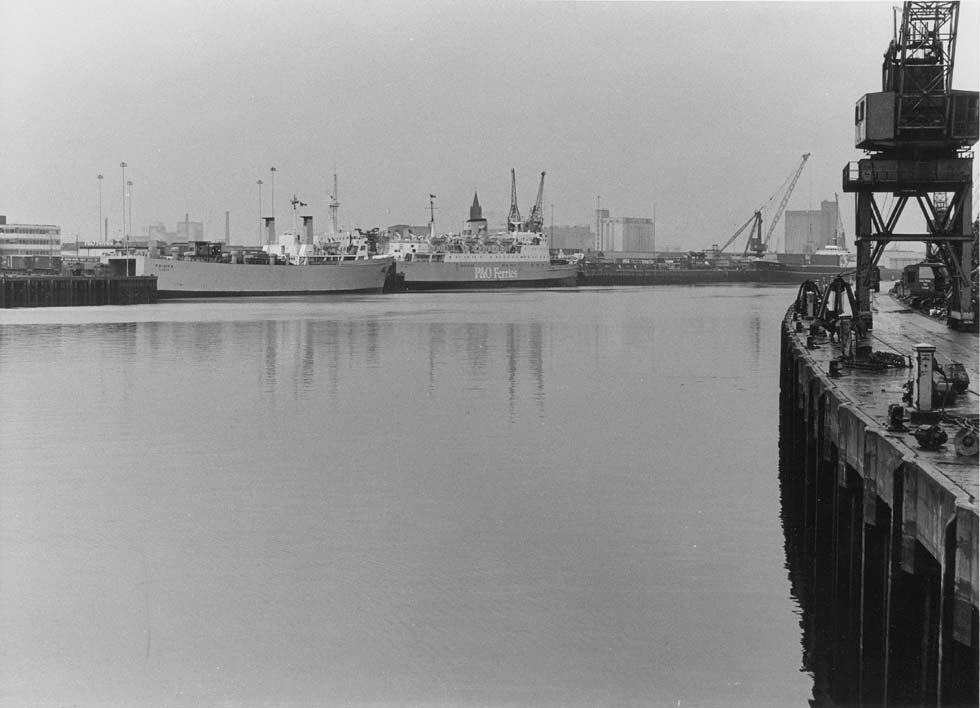
"Ulster Prince" of P&O at Belfast, bound for Liverpool, 1981 (WS)
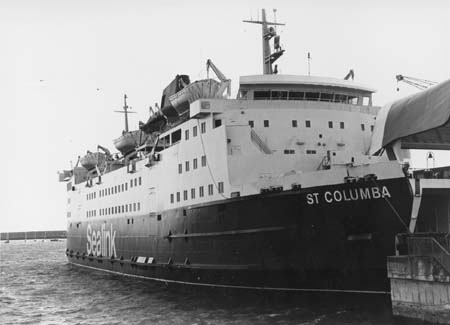 "St. Columba" of Sealink BR, arrival at Dun Laoghaire 1981 (WS)
"St. Columba" of Sealink BR, arrival at Dun Laoghaire 1981 (WS)
Hi-Speed
The first car-carrying monohull hi-speed in Britain was the "Jetliner" (4,563 gt), introduced in 1996 in the Irish Sea under P&O charter (later sold to Indonesian owners). P&O Irish Sea continued Troon and Cairnyan - Larne services with the "Express", an InCat 91m catamaran.
Among Sherwood's various activities were the SeaCat hi-speed services Liverpool - Dublin, Stranraer - Belfast and Troon - Belfast of Sea Containers Ferries. When Sherwood turned away from catamarans, he ordered the SuperSeaCat monohulls of the extended MDV1200 type from Fincantieri. The "SuperSeaCat Two" of 1997 and the "SuperSeaCat Three" of 1999 were transferred from the Irish Sea to the Channel. SeaCat ceased operations in December 2004.
Services connecting the Isle of Man with Liverpool, Dublin and Belfast are provided by the traditional Isle of Man Steam Packet Co. Remarkable among their hi-speeds became the "Sea Express 1", an InCat of 1991, and the monohull "SuperSeaCat Two", taken over from Sea Containers. The "SeaCat Isle of Man" was only in 2005 employed by Irish Sea Express as "Sea Express I" on a Liverpool - Dublin route.
Among all the hi-speeds of various companies the most striking ones are the 19,638-ton car-carrying HSS catamarans of Stena Line, world's largest, built by Aker Finnyards for a speed of 40 knots, powered by gas-turbines, with waterjet propulsion. "Stena Explorer" was introduced on the Holyhead - Dun Laoghaire route in 1996, the "Stena Voyager" on the Stranraer - Belfast run in the same year, joined in 1997 by the "Stena Discovery", then transferred to Harwich - Hoek. Between Fishguard and Rosslare the company maintained 'Lynx' catamaran services, while the future of the large HSS catamarans was called into question.
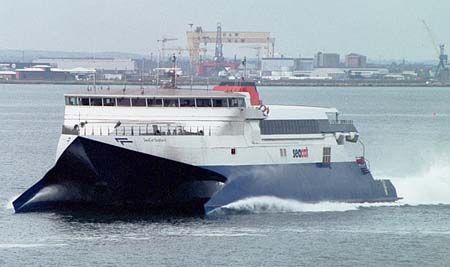
"SeaCat Scotland" departs at Belfast for Scotland, 1999 (author SeaExpress1, via Wikimedia)
|
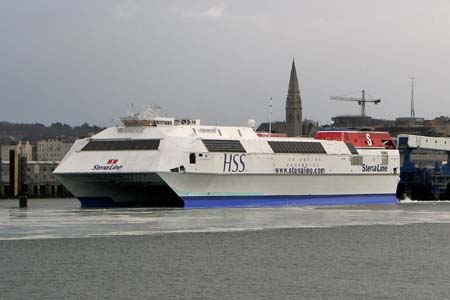
"Stena Explorer" at Dun Laoghaire, 2009 (Benjamin Nagel, via Wikimedia)
|
Larger Car Ferries
Ordinary car ferry services continued to be provided in the first years of the new century between Scotland and Larne by P&O Irish Sea, Scotland and Fleetwood - Belfast by Stena Line, Birkenhead - Belfast and Dublin by NorseMerchant, the Norfolk Line Irish Sea Ferries, Pembroke - Rosslare by Irish Ferries, while Swansea Cork Ferries disappeared. On the route from Roscoff, France, to Cork the French company Brittany Ferries employed temporarily the 41,748-ton "Pont-Aven" of 2004. Irish Ferries, initially also P&O Irish Sea and then LD Lines provided connections with French ports, too.
In 2011 were listed (via Wikipedia) for the Irish Sea the passenger-carrying car ferry services of Irish Ferries, Stena Line, P&O Ferries, Isle of Man S.P.Co., Fastnet Line (successor of Swansea Cork Ferries) and Celtic Link Ferries. The latter started in 2005 Rosslare - Cherbourg services, chartered in 2009 the "Norman Voyager" from LD Lines and had introduced in 2006 the 27,522-ton ro-pax "Celtic Horizon".
Stena Line added in 2010 Liverpool - Belfast and other services from DFDS. The "Superfast VII" and "Superfast VIII" (30,285 gt, built for the Greek company Superfast Ferries) were chartered from Tallink and refurbished in 2011 for taking up Cairnryan (Loch Ryan Port) - Belfast services as "Stena Superfast VII" and "Stena Superfast VIII", replacing other ships.
The largest ferry of the Irish Sea had been introduced with the 50,938-ton "Ulysses", delivered by Aker Finnyards in 2001 to Irish Ferries. The white ship with the 'Irish' green funnel, built for 1,875 passengers, equipped with 117 cabins and 4,076 lane metres, took up service on the classic route Holyhead - Dublin. For the routes from Cherbourg and from Roscoff to Rosslare the "Oscar Wilde" (1987/ 31,914 gt, ex "Kronprins Harald" of Jahre Line, then Color Line) was refurbished in 2007. The "Bilbao" (ex "Pride of Bilbao") sailed for P&O Ferries. The "Ulysses" continued Holyhead - Dublin services, essential to truck transport. The connecting Irish Mail train from London however had disappeared already in 1988.
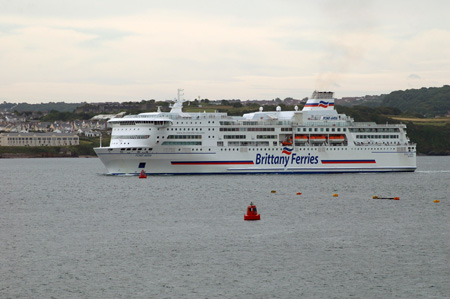
"Pont Aven" of Brittany Ferries, Plymouth Sound 2008 (Nilfanion, via Wikimedia)
|
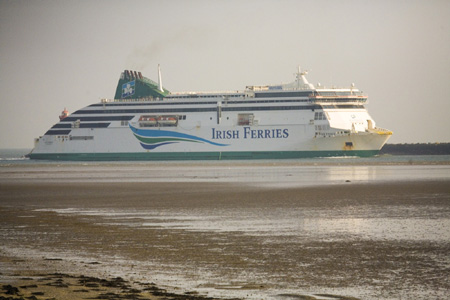
"Ulysses" of Irish Ferries, near Dublin (on flickr, via Wikimedia)
|
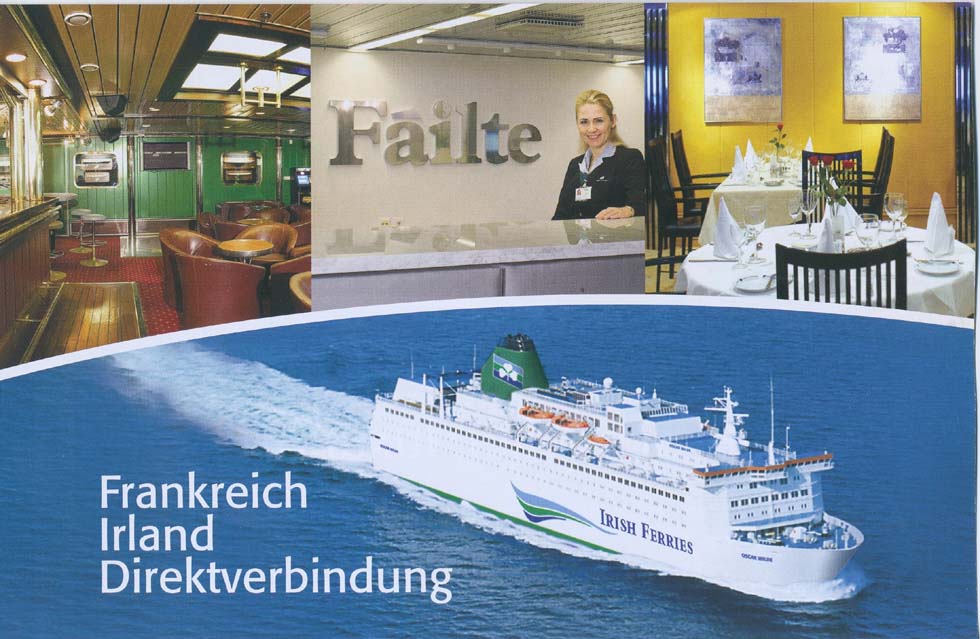
"Oscar Wilde" (Irish Ferries)
|